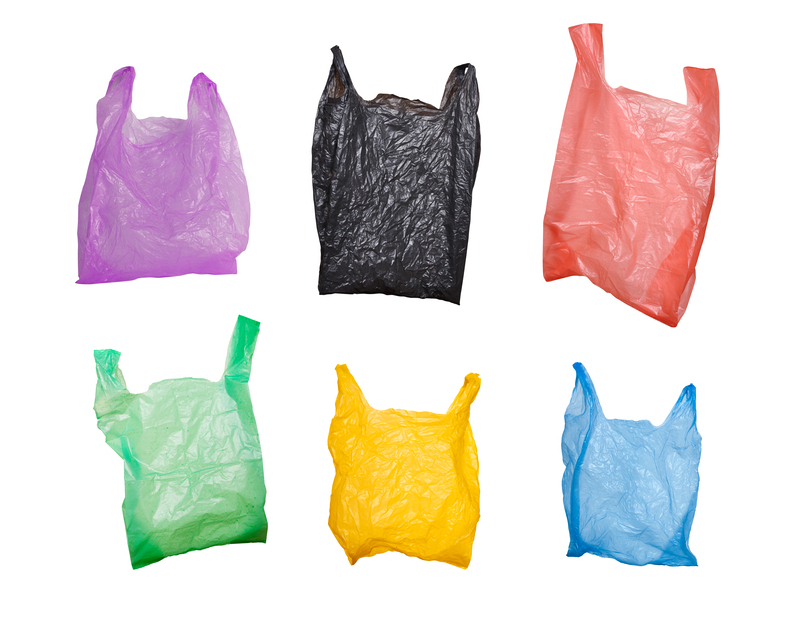The Comprehensive Guide to Handling PPE Waste Responsibly
In a world increasingly reliant on personal protective equipment (PPE), the question of responsibly handling PPE waste has become more important than ever. Whether in healthcare, industrial settings, or everyday life, the surge in usage--especially due to global events like the COVID-19 pandemic--has spotlighted the significant challenge of managing PPE waste responsibly. This guide delivers an in-depth, SEO-optimized overview on how to properly deal with PPE waste, ensuring safety for people and the environment.
Understanding PPE Waste: What Is It?
PPE refers to Personal Protective Equipment designed to protect users from health or safety risks. Common forms of PPE include:
- Masks and respirators
- Gloves (latex, nitrile, vinyl)
- Face shields and goggles
- Gowns, coveralls, and aprons
- Shoe and head covers
After use, particularly in healthcare settings or areas exposed to hazardous substances, PPE becomes contaminated waste. Handling this PPE waste responsibly is crucial to limiting infection, pollution, and environmental harm.

The Environmental Impact of Improper PPE Waste Disposal
Improper PPE waste management has created new environmental threats. In landfills, plastics from single-use masks or gloves take decades--if not centuries--to degrade. When improperly discarded, PPE can:
- Pollute water bodies and marine environments
- Harm wildlife through ingestion or entanglement
- Introduce toxic chemicals and microplastics into ecosystems
- Spread infectious diseases if contaminated items are mishandled
PPE Waste Categories and Segregation
PPE waste is not a one-size-fits-all category. To responsibly dispose of PPE, first understand how PPE waste is classified:
1. Infectious PPE Waste
- Used in healthcare environments
- May contain biological hazards
- Must be treated as medical hazardous waste
2. Non-Infectious PPE Waste
- PPE used in households, offices, and other non-medical settings
- Potentially safe for general waste if not exposed to infectious materials
3. Recyclable PPE Waste
- Certain types of masks, gloves, and goggles are recyclable
- Requires special collection and processing systems
Proper segregation at the point of disposal is a key foundation of any PPE waste management plan. This minimizes contamination, supports reuse or recycling, and ensures hazardous materials are treated safely.
PPE Disposal Regulations and Compliance
Regulatory agencies around the world--including the World Health Organization (WHO), OSHA, and regional environmental agencies--have issued clear guidelines for PPE waste management. Typically, regulations include:
- Segregating infectious and non-infectious PPE waste
- Using color-coded waste bins for different types of waste (often yellow or red containers for medical PPE)
- Labeling and securely sealing waste bags
- Safe internal transportation and storage
- Mandatory PPE waste treatment (autoclaving, incineration, or chemical disinfection for infectious waste)
- Authorized disposal or recycling partners
Familiarize yourself with your local regulations and institute practices that not only comply but set a higher standard for handling PPE waste responsibly.
Best Practices for Managing PPE Waste Responsibly
1. Establish a PPE Waste Policy
- Develop or update your company's waste policy to address PPE specifically
- Train staff and stakeholders on proper handling measures
- Review policies regularly for compliance with evolving laws and standards
2. Use Clearly Labeled Waste Bins
- Color-code waste bins for easy identification (e.g., red for hazardous, blue for recyclables)
- Place PPE disposal points at strategic, high-traffic locations
- Ensure bins are touchless or foot operated to reduce cross-contamination
3. Educate Staff and the Public
- Post signage and infographics showing proper PPE disposal
- Hold awareness campaigns in communities, businesses, and public facilities
- Encourage reporting and correcting improper disposal practices
4. Implement PPE Waste Collection and Storage Protocols
- Transport waste to designated storage areas daily
- Use leak-proof, puncture-resistant bags
- Avoid compressing bags to reduce exposure risk
- Monitor and clean storage spaces regularly
5. Select Responsible PPE Waste Disposal Methods
The chosen disposal method depends on the type and volume of PPE waste:
- Incineration: For infectious or heavily contaminated PPE--destroys pathogens and reduces waste volume
- Autoclaving: Steam sterilization can neutralize biological hazards before sending to landfill or recycling
- Chemical Disinfection: Some facilities use chemicals to render waste non-infectious prior to disposal
- Recycling: Where available, select PPE items like certain masks or gloves can be recycled with specialized partners (never assume household collection accepts PPE waste)
PPE Waste Recycling: Opportunities and Limitations
PPE, by design, is often made for single-use, complicating recycling efforts. However, innovations in PPE waste recycling are emerging:
- Specialized recycling programs can process polypropylene masks and gloves for new products (e.g., plastic benches, construction materials)
- Some companies offer collection bins and logistics for PPE recycling in hospitals or large organizations
- Eco-friendly design trends encourage the use of biodegradable materials for future PPE
Yet, limitations persist:
- Not all PPE types are recyclable
- Risk of contamination may disqualify PPE for conventional recycling streams
- Costs and logistics pose barriers, especially for smaller organizations
If recycling isn't feasible, always choose the safest available disposal method.
Personal PPE Waste: How Households Can Help
Beyond hospitals and industries, households contribute a significant proportion of PPE waste. Here's how individuals can act responsibly:
- Do not flush masks or gloves down toilets; this causes sewer blockages and environmental pollution
- Bag used masks and gloves before placing them in external waste bins
- Avoid mixing used PPE with recyclables or compost
- Follow local council guidelines for PPE disposal and take advantage of special collection schemes if available
- Where possible, switch to reusable, washable masks and gloves to reduce waste
Education and community awareness go a long way in preventing litter, especially in parks and public spaces.
Innovative Solutions in PPE Waste Management
As the world contends with the lasting impact of PPE disposal, innovation is paving the way for more sustainable PPE waste solutions.
New Approaches Include:
- Biodegradable PPE: Companies are developing compostable masks and gloves using starch, cellulose, or natural fibers.
- Advanced Sterilization: Portable UV-C units and ozone sterilizers render used PPE safe for normal disposal or, in some cases, limited reuse.
- Mechanical Recycling: Used PPE plastic is washed, shredded, and turned into durable goods.
- Incentive Programs: Organizations reward safe PPE waste collection and recycling, enhancing participation rates.
Special Considerations: Handling PPE Waste Amidst Public Health Emergencies
During outbreaks like the COVID-19 pandemic, the volume of PPE waste surges dramatically. Key steps include:
- Designating additional covered disposal bins in high-use locations
- Increasing waste collection frequency
- Securing enough protective gear for waste handlers
- Collaborating with government and private hauliers for surge capacity
- Clear communication with the public on updated PPE disposal rules

Frequently Asked Questions on Responsible PPE Waste Handling
Can PPE be thrown into regular household bins?
Generally, non-medical and non-contaminated PPE may be disposed of in household bins. However, do not recycle unless a program exists, and always bag PPE first. Follow local guidelines.
Are there penalties for improper PPE waste disposal?
Yes--many regions issue fines for PPE littering or improper disposal, especially in medical settings. These penalties are designed to protect public health and the environment.
What should small businesses do with used PPE?
Small businesses should:
- Set up labeled collection bins
- Work with certified waste management partners
- Educate staff on proper procedures
- Keep records of PPE waste disposal for compliance
Is reusing PPE safe?
Generally, most PPE is designed for single-use. Some items (like washable cloth masks or face shields) may be cleaned and reused, but always follow manufacturer instructions.
Conclusion: The Shared Responsibility of PPE Waste Disposal
The surge in PPE waste is both a challenge and an opportunity for greener, safer waste management systems. Whether you're a healthcare provider, a business owner, or an individual, responsible PPE waste handling is a shared responsibility. Proper segregation, education, compliance, and embracing innovative solutions are crucial steps towards minimizing the impact of PPE on our environment and health.
By following the guidance in this comprehensive article, you can play a vital role in handling PPE waste responsibly. Let's adopt better practices today, and safeguard our future for generations to come.
- Handle PPE waste responsibly for a cleaner planet
- Choose sustainable PPE options when available
- Support and advocate for PPE recycling programs
For more resources, consult your local health agency or environmental department about PPE waste disposal and recycling initiatives in your area.
